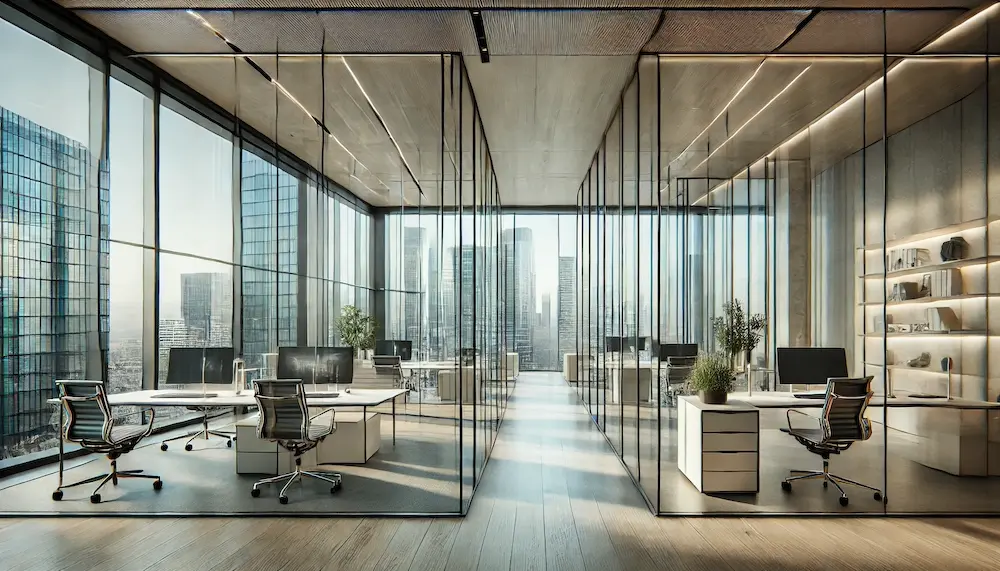Contemporary glass office design emphasizes transparency, natural light, and a sleek aesthetic, creating workspaces that are both functional and visually appealing.
History and Origins of Glass in Office Design
The use of glass in architecture dates back to ancient Rome, where it was employed in windows to allow natural light into buildings. However, it wasn’t until the Industrial Revolution that advancements in glass production made it more accessible for architectural purposes. In the 20th century, modernist architects like Mies van der Rohe popularized the extensive use of glass in building facades, leading to the development of glass-walled skyscrapers and offices. This evolution has culminated in today’s contemporary glass office designs, which prioritize openness and connectivity.
Key Features of Contemporary Glass Office Design
- Transparency and Openness: Glass walls and partitions create an open environment that fosters collaboration and communication among employees.
- Natural Light Utilization: Extensive use of glass allows for the penetration of natural light, reducing the need for artificial lighting and enhancing employee well-being.
- Sleek Aesthetics: Glass elements contribute to a modern and professional appearance, often complemented by minimalist design principles.
- Smart Glass Technology: Incorporating smart glass that can change opacity provides flexibility in privacy and lighting control, adapting to various needs throughout the day.
Applications of Contemporary Glass Office Design
- Partitioning: Glass partitions divide spaces without obstructing light or creating a sense of isolation, maintaining an open-plan feel while providing functional separation.
- Facade Design: Glass facades offer a sleek exterior appearance and allow natural light to flood the interior, enhancing the overall ambiance of the office.
- Doors and Entrances: Glass doors contribute to the transparency and openness of the office environment, reinforcing a welcoming and modern atmosphere.
Considerations When Implementing Glass in Office Design
- Privacy: While glass promotes openness, it can compromise privacy. Solutions include frosted or textured glass, as well as smart glass technologies that adjust opacity as needed.
- Acoustics: Glass surfaces can reflect sound, potentially increasing noise levels. Implementing acoustic treatments, such as sound-absorbing materials and strategic space planning, can mitigate this issue.
- Safety and Durability: Utilizing tempered or laminated glass enhances safety by reducing the risk of breakage and injury.
- Energy Efficiency: Incorporating energy-efficient glass options, such as low-emissivity (Low-E) glass, can improve insulation and reduce energy consumption.
Conclusion
Contemporary glass office design offers a harmonious blend of functionality and modern aesthetics, creating work environments that are open, light-filled, and conducive to productivity. By thoughtfully considering factors such as privacy, acoustics, and energy efficiency, businesses can effectively implement glass elements to enhance their office spaces.
